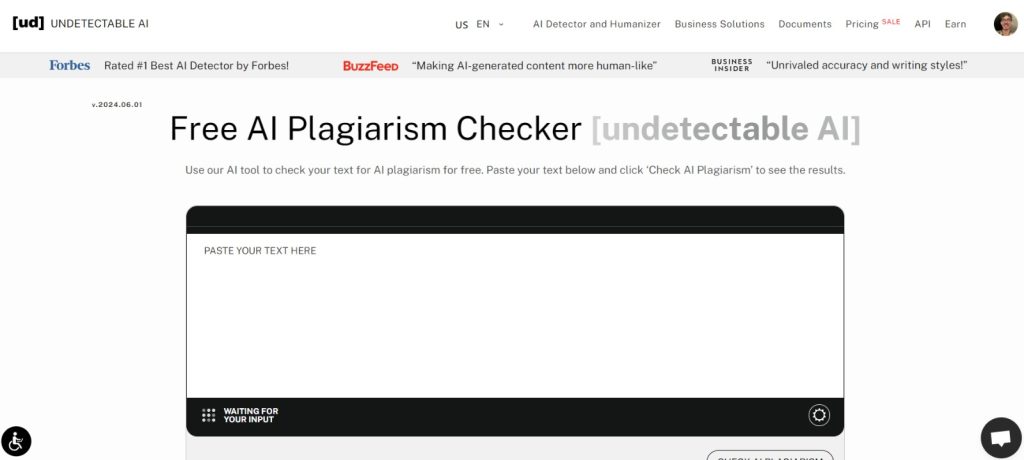Plagiarism has become all too common today—nearly four out of five students admit to copying at some point
It’s a big problem, especially in schools and universities where originality and honesty are so important.
It’s become a serious problem in the workplace, too. As tempting as it is, it’s crucial to avoid copying someone else’s work.
Well, what if you copy your own work?
At first, self-plagiarism might sound strange. But think of submitting something you’ve previously written and passing it off as something new.
It’s a tricky topic to tackle, so we’re here to get to the bottom of it.
Can you plagiarize yourself? In this guide, we’ll argue it is possible, give a clear example of self-plagiarism, and offer some ways to avoid it.
Let’s get started.
Key Takeaways
- Self-plagiarism happens when you reuse your own work without acknowledgment, misleading readers into thinking it’s new.
- While not illegal, self-plagiarism is unethical and can damage academic or professional credibility.
- Proper citation, paraphrasing, and developing fresh ideas help maintain originality and integrity.
- Using plagiarism checkers like Undetectable AI ensures your content stays original and free from AI-generated text.
- Undetectable AI’s detector and humanizer tools instantly flag and humanize AI-written content for fully authentic results.
What is Self-Plagiarism?
The concept of plagiarism goes back to ancient times, but the modern definition of what constitutes plagiarism has become a major focus in 2025
He complained that another poet had “kidnapped his verses.”
The word “plagiarism” comes from the Latin word “plagiarus,” which literally means kidnapping.


Never Worry About AI Detecting Your Texts Again. Undetectable AI Can Help You:
- Make your AI assisted writing appear human-like.
- Bypass all major AI detection tools with just one click.
- Use AI safely and confidently in school and work.
It was then introduced into English in 1601 to describe someone guilty of stealing literary works.
Plagiarism has taken many forms since then, one of which is self-plagiarism.
This occurs when you reuse your own previously published or submitted work and present it as new.
Self-plagiarism works pretty much the same way as traditional plagiarism.
You copy and paste parts of your previous work into your new assignment and don’t acknowledge or cite it.
Teachers (or anyone else reading your work) are led to believe that the work is fresh—when it’s really not.
So, is self-plagiarism illegal? While the act isn’t illegal in itself, it’s still considered unethical and can violate academic or professional standards.
The act of plagiarism can even lead to a copyright violation, which can lead you to court.
While you might think it’s okay since it’s just your own work, it still violates the principle of honesty.
Remember that schools and employers expect each piece of work you produce to be unique.
Examples of Self-Plagiarism
Imagine you’re a student who wrote a great history paper last semester.
This semester, you take a political science class.
Because your already submitted history paper fits the assignment for this new class, you just reworked it here and there as your new poli-sci assignment.
That’s self-plagiarism.
The concept is simple: You copy your own work without letting anyone know. Even though it’s your own work, calling it new is misleading.
You might not also know that you’re already self-plagiarizing. Here are a few more examples.
- Simply paraphrasing portions of your previous work.
- Submitting the same work to different classes.
- Recycling your already published content for other publications.
- Using your previous research data without acknowledgment.
By recognizing what self-plagiarism is and how it can occur, you can take the time to avoid it and produce truly original content every time.
Best Practices to Avoid Self-Plagiarism

Reusing your own work seems harmless at first, but it can compromise your integrity.
Self-plagiarism is a tricky area to deal with, so here are some best practices to help you maintain originality and integrity in your work.
Adhere to Citation Standards
Properly citing sources is a must, not just with the works of others but yours, too.
Even when you use your previous work, it’s only right that you cite it to give proper credit.
Self-citation goes beyond acknowledging yourself, as it’s more like letting the reader know that the content has been used before.
This avoids the misrepresentation of your old work as new.
Various citation styles—APA, MLA, and Chicago—all have specific formats for self-citation. Here’s a quick breakdown of each.
APA Style (American Psychological Association)
APA is considered the standard citation style because it’s clear at presenting sources clearly and precisely.
For example, a book citation in APA format would look like this: Smith, J. (2023). Title of the Book. Publisher.
APA style also has a running head and page numbers included in the header of each page, and that includes the formatting and structuring guidelines.
MLA Style (Modern Language Association)
Commonly used in the humanities and the arts, MLA focuses more on the author’s name and the page number where the information is found.
A book citation in MLA format would be like this: Smith, John. Title of the Book. Publisher, 2023.
MLA style is known for its simplicity. And because there’s an emphasis on the author’s name and the location of the information within the text, it’s great for literary analysis.
Chicago Style
Chicago style is probably the most versatile citation format. It’s widely used across various disciplines, including history and business.
It has two systems: the Notes and Bibliography system, which is common in humanities, and the Author-Date system, which is used more by sciences.
A book citation in Chicago style would be: John Smith, Title of the Book (City: Publisher, 2023).
The Chicago style allows flexibility in citation format and is appreciated for its comprehensiveness when it comes to citing.
Paraphrase Previous Content
Paraphrasing is the act of rewording someone else’s ideas in your own voice while maintaining the original meaning.
Don’t forget that just changing a few words or rearranging sentences doesn’t count. Improper paraphrasing can still be considered plagiarism.
To paraphrase the right way, always read the original text until you completely understand the main idea.
Then, you can set it aside and write the idea in your own words. We suggest not looking at the original to avoid the tendency of just rewording it.
To check, compare your version with the original to ensure you haven’t accidentally copied exact phrases.
And even when paraphrasing, you must still credit the source as it’s still not originally yours.
Focus on New Ideas
Originality is key when it comes to content creation. Bringing new ideas to the table is what keeps this industry going.
And it’s still quite untapped—only one out of four people feel that they’re maximizing their creative potential.
To boost your originality, try to make brainstorming a regular habit.
Get inspiration from different things like traveling, watching films, reading a lot of books, and going to talks and lectures.
Even talking to your friends and colleagues works wonders.
If you still find yourself stuck, it doesn’t hurt to step away and take a break—returning later with a fresh perspective can make all the difference.
Originality in creativity involves taking in different perspectives, experimenting with new styles, and being open to feedback.
Keeping a notebook (or a digital one) for jotting down sudden ideas can also be helpful.
Use a Plagiarism Checker

Unintentional plagiarism is more common than you might think.
Even when you don’t mean to plagiarize, you might slip up and include phrases or ideas from previous work.
And with new popular tools, AI plagiarism has become another concern.
Manually doing the work can be a hassle. Using a plagiarism checker can catch these quickly before they become a problem.
Plagiarism checkers scan your text for similarities with existing content, including your past submissions.
Many of these tools can even be easily integrated directly into online writing platforms like Google Docs.
To make sure that your content is free from AI plagiarism, you can rely on Undetectable AI.
Trusted by millions of students, institutions, and businesses, Undetectable’s award-winning software checks for AI-generated content effortlessly.
Simply paste your text into the tool and let it analyze your work within seconds.
For any detected AI content, you can use Undetectable’s AI humanizer to match human writing styles instantly. It’s an all-in-one platform you’ve got to have.
Combining your efforts with a reliable plagiarism checker can considerably reduce the risk of plagiarism and give you the confidence that your work stays true.
See your results instantly with our AI Detector and Humanizer below!
FAQs
How can you plagiarize yourself?
Using your own work without citing it properly is still considered plagiarism. Even though it’s your original work, the issue is that you’re presenting it as new. Not acknowledging its previous use is misleading and unethical.
Is self-plagiarism illegal?
Self-plagiarism is not illegal, but it violates academic or professional guidelines. It can also result in serious consequences like suspension or expulsion from school or forever damage your professional reputation.
How can self-plagiarism be detected?
You can detect self-plagiarism by using reliable plagiarism detection tools that compare your new work with previously submitted or published content – including yours. These tools should be able to highlight any similarities and help you identify reused sections.
What are the tools to prevent self-plagiarism?
To prevent self-plagiarism and plagiarism in general, you can use popular plagiarism checkers like Turnitin, Grammarly, and Undetectable AI. These tools scan your text for similarities with existing content and ensure originality in your work by checking for both traditional and AI plagiarism.
Conclusion
Understanding how self-plagiarism works might seem complicated, but it’s something you should be aware of to always keep your work credible.
Each content you produce should stay original so as not to mislead others.
If you’re using AI tools to assist with your writing, make sure to include Undetectable AI as your go-to AI plagiarism checker.
It helps protect your content as you maximize your productivity with AI.
By sticking to these practices and relying on the right tools, you can keep your work fresh, genuine, and respected.
